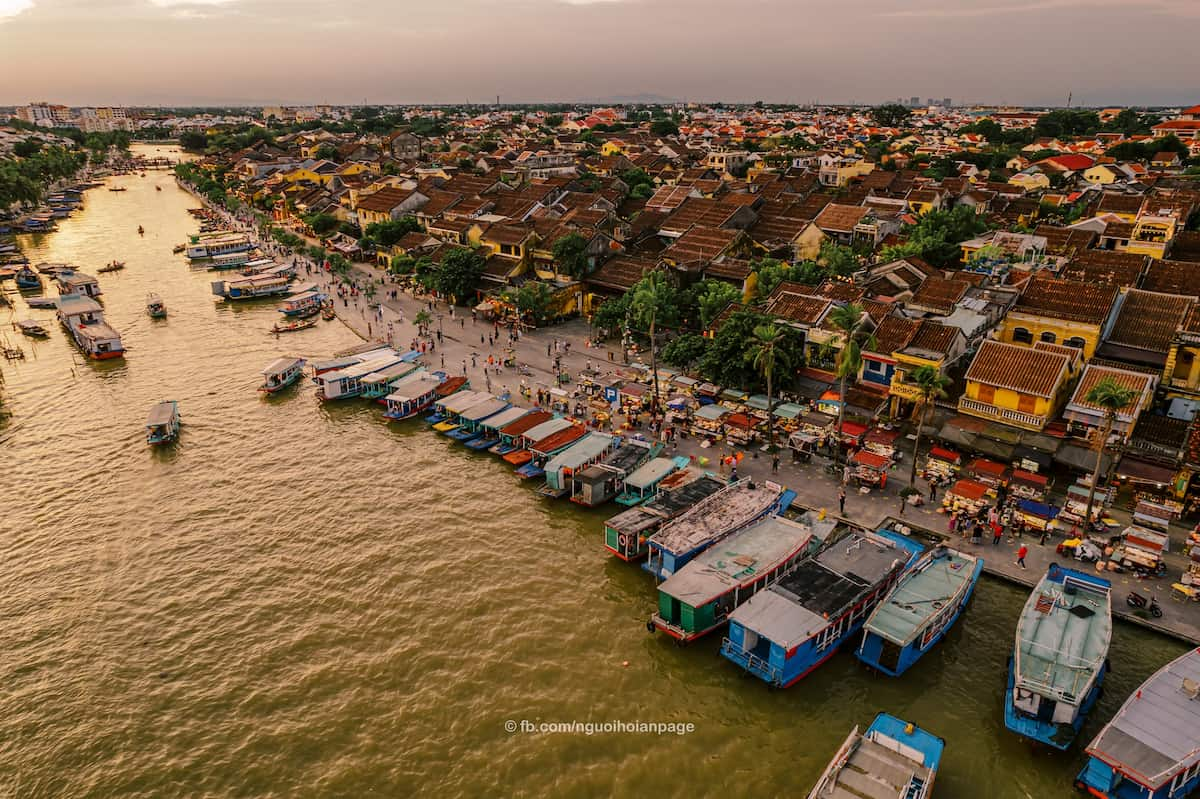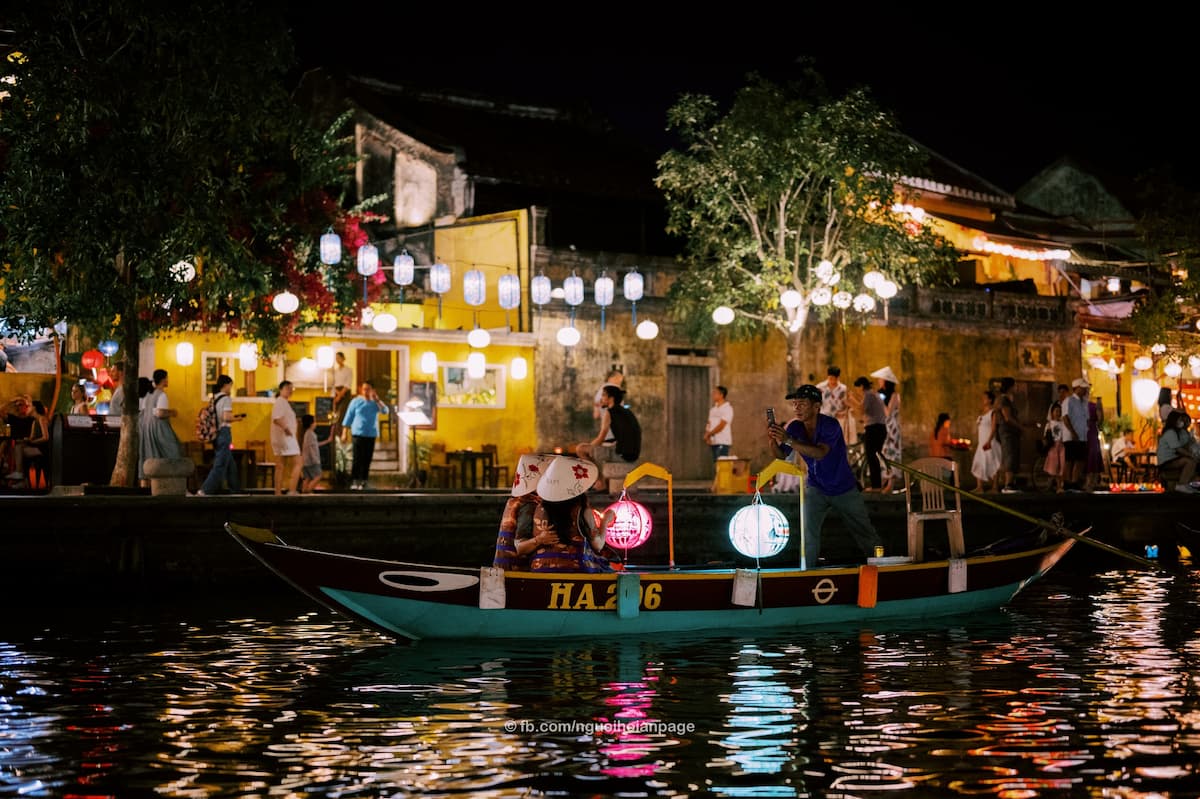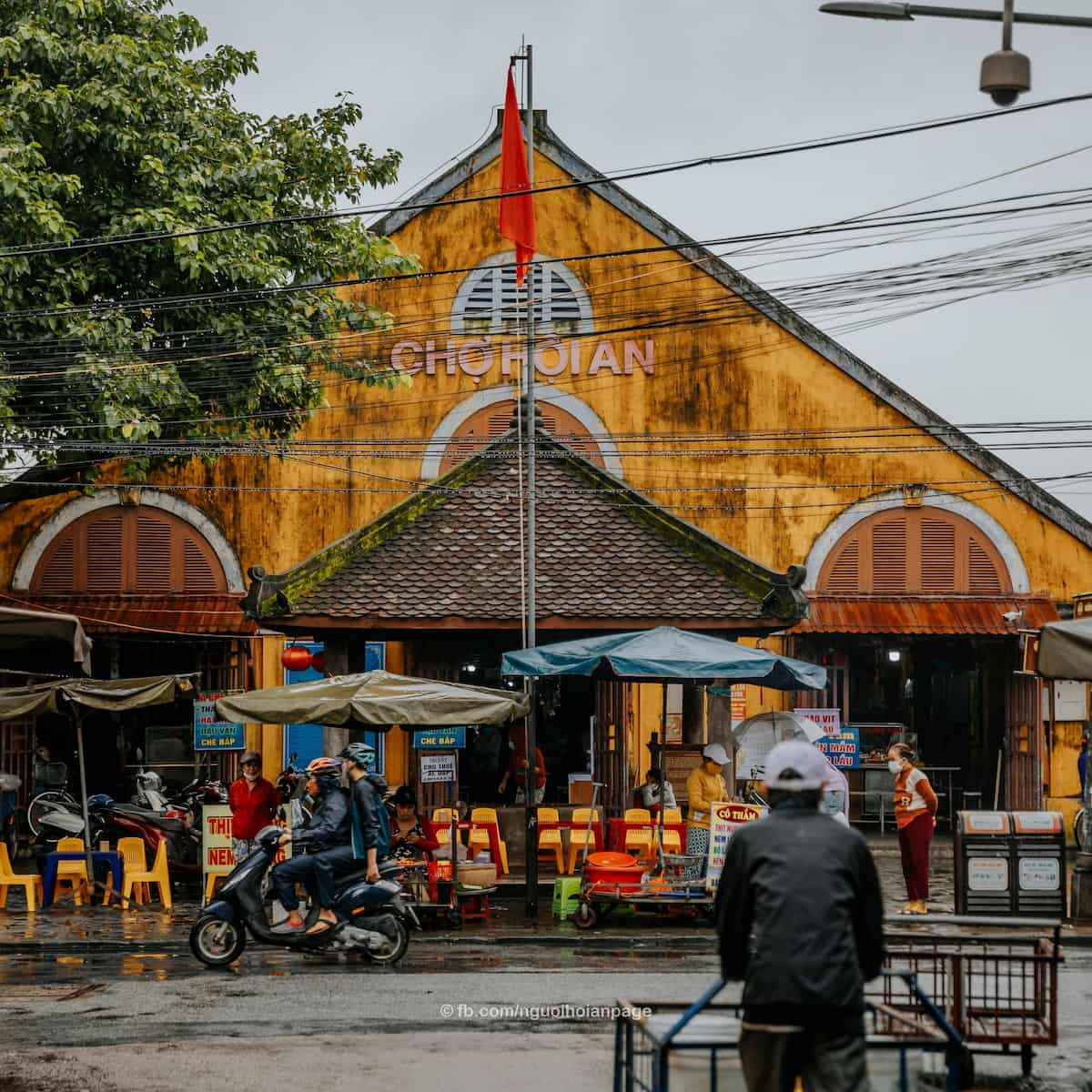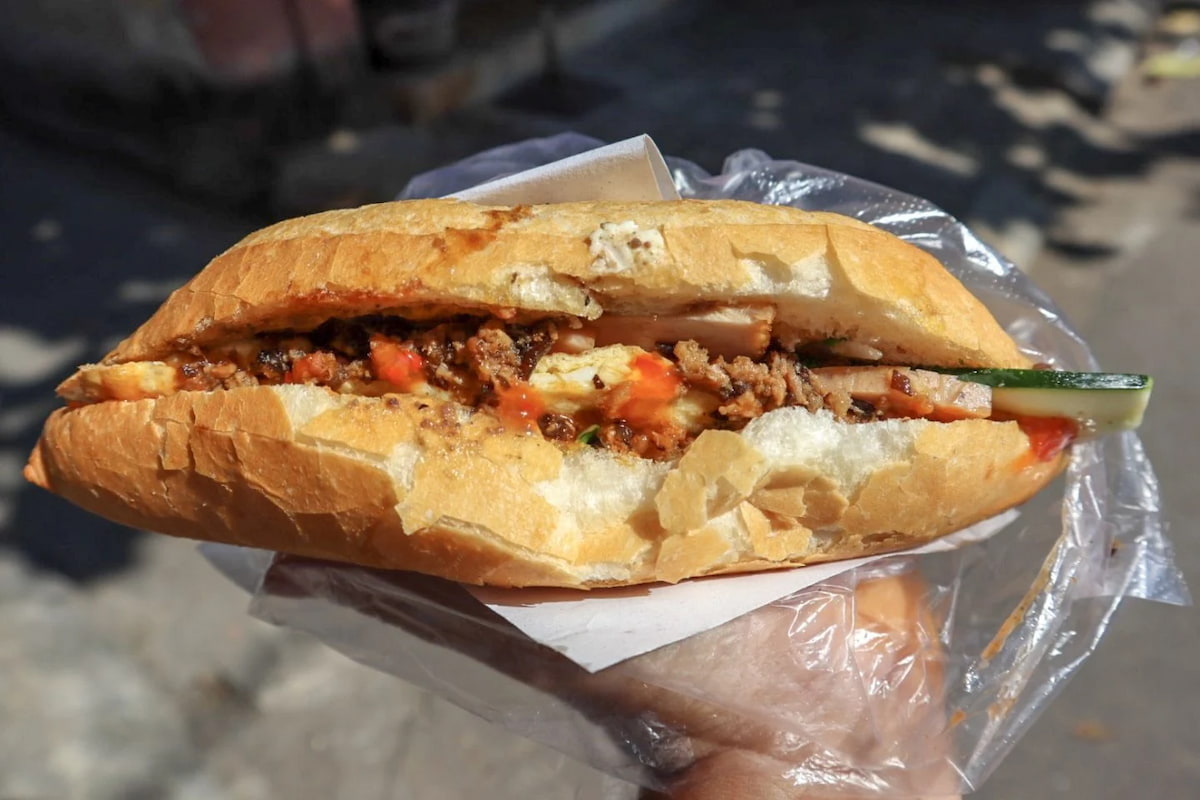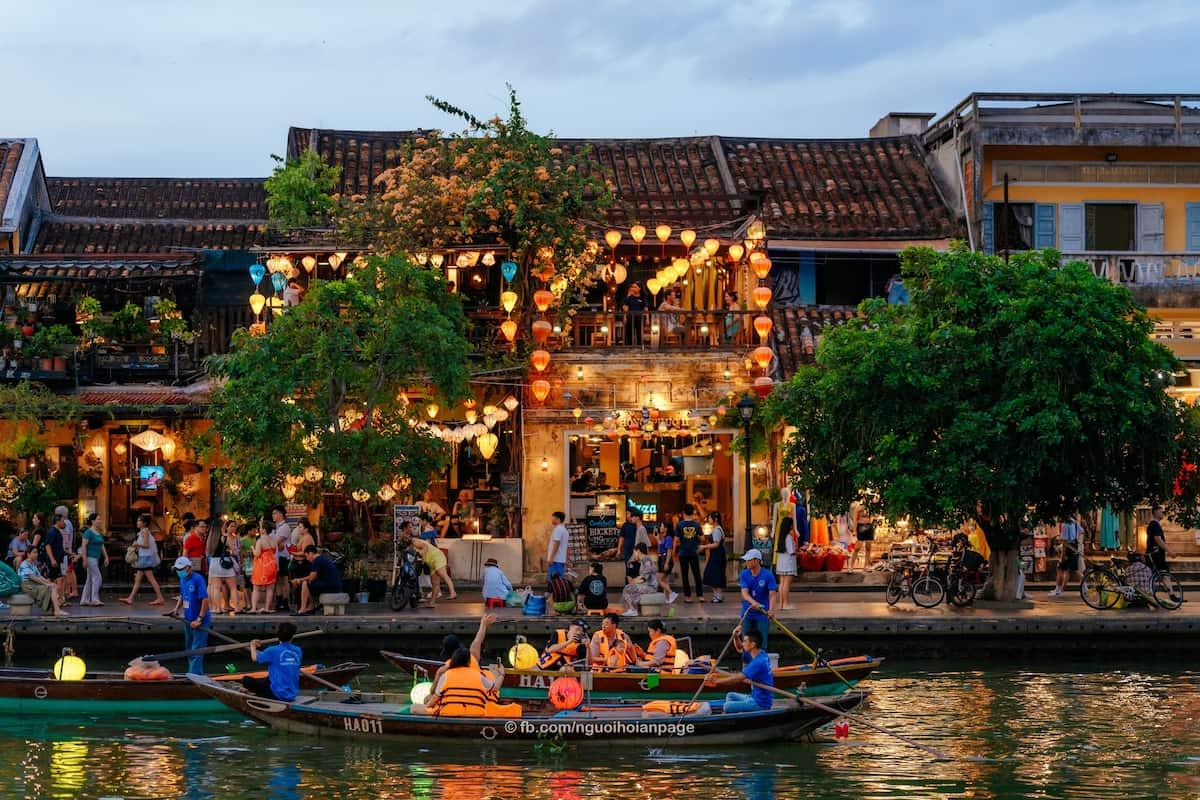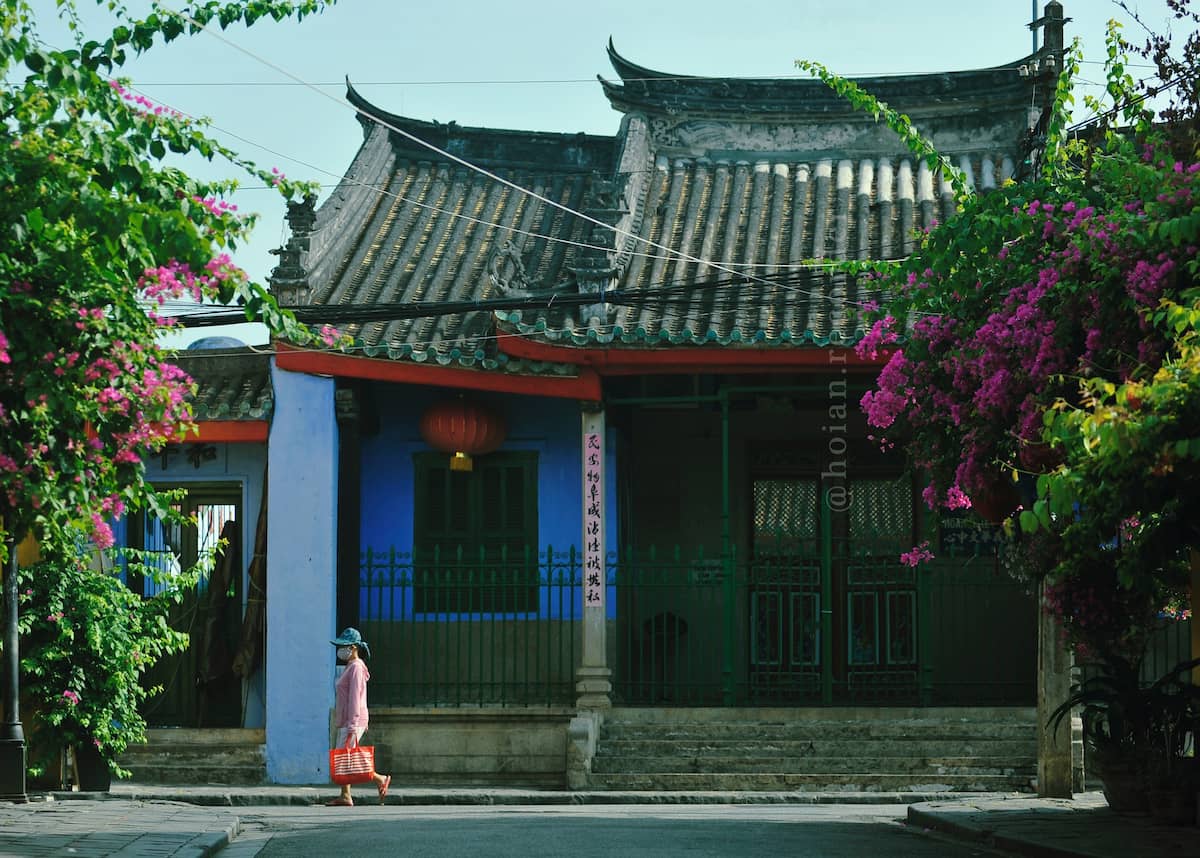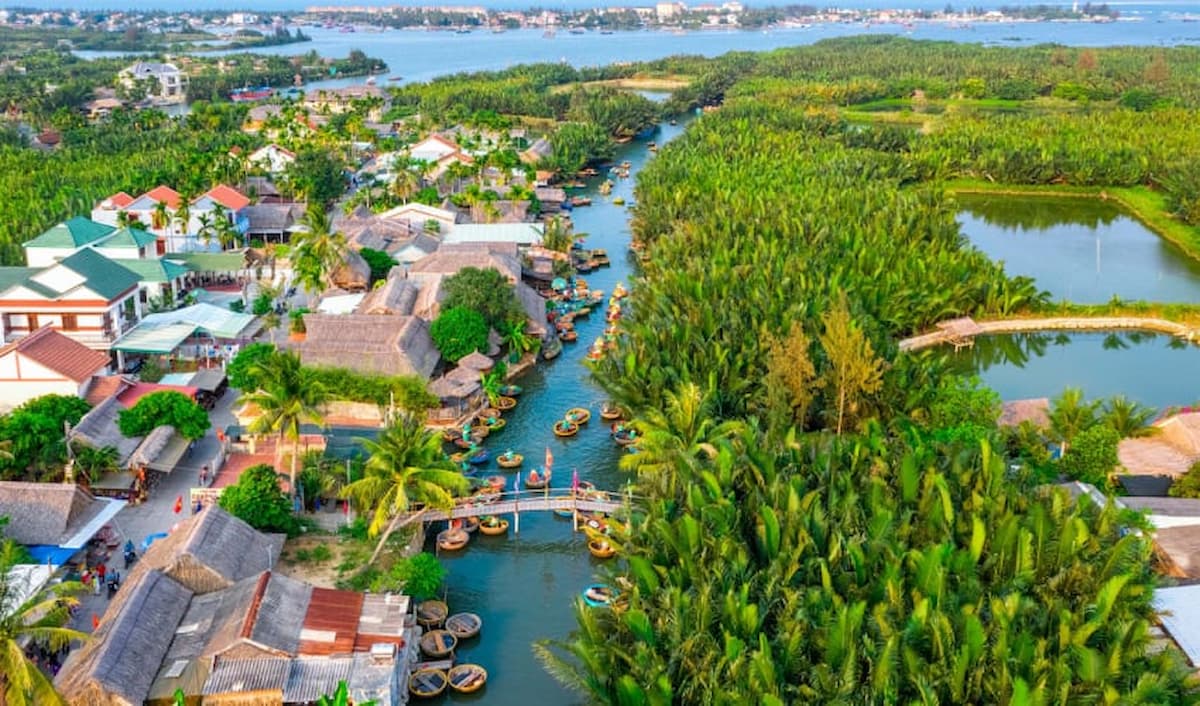Hoi An Ancient Town: A Complete Travel Guide
For many years, Hoi An Ancient Town has had the hearts of people from over the world for its antique beauty and precious hospitality. As a UNESCO heritage since 1999, it’s the most authentic place in Vietnam; everything about it is beautifully intact. If you’ve traveled there, it’s a greatest plot you have ever made for the… Continue reading Hoi An Ancient Town: A Complete Travel Guide
For many years, Hoi An Ancient Town has had the hearts of people from over the world for its antique beauty and precious hospitality. As a UNESCO heritage since 1999, it’s the most authentic place in Vietnam; everything about it is beautifully intact.
If you’ve traveled there, it’s a greatest plot you have ever made for the canon. If you haven’t, make a plan!
In this post, we provide a well-made travel guide to Hoi An Ancient Town. Whether it’s just a couple of days you spend there, you could experience the best of Hoi An with this handy guide.
Scroll down to learn more about the city and what makes it a must-visit!
About Hoi An Ancient Town
1. Origin
Hoi An Ancient Town, nestled on the north bank near the mouth of the Thu Bon River in Vietnam’s central Quang Nam Province, is a testament to a vibrant past.
This well-preserved South-East Asian trading port, active from the 15th to the 19th centuries, is a unique blend of indigenous and foreign cultures, primarily Chinese and Japanese, with later European influences.
The town’s history, however, dates back over a thousand years when it was part of the deeply spiritual Champa Kingdom.
The Hindu Champas were overthrown by the invading Vietnamese in the 15th century, and Hoi An’s Ancient Town was established as a major trading port around the time of their defeat in 1471. Between the 7th and 10th centuries, Hoi An served as the commercial and economic hub for the Cham people.
2. Architecture
The town comprises an intact complex of many timber frame buildings, with brick or wooden walls. These include architectural monuments, commercial and domestic vernacular structures, an open market, a ferry quay, and religious buildings such as temples and family cult houses.
The houses are tiled and the wooden components are carved with traditional motifs. They are arranged side-by-side in tight, unbroken rows along narrow pedestrian streets.
One of the town’s most iconic structures is the fine wooden Japanese bridge, with a shrine on it, dating from the 16th century.
The original street plan, which developed as the town became a port, remains. It comprises a grid of streets with one axis parallel to the river and another axis of streets and alleys set at right angles to it.
Today, Hoi An Ancient Town continues to be occupied and function as a trading port and center of commerce. The living heritage reflecting the diverse communities of the indigenous inhabitants of the town, as well as foreigners, has also been preserved and continues to be passed on.
Hoi An Ancient Town remains an exceptional example of a Far Eastern port.
3. People
The people of Hoi An are a blend of different cultures, reflecting the town’s history as an international trading port.
Today, the people of Hoi An are known for their friendly service and high tailoring skills. The town is famous for its tailor-made clothes, with staff known for their patience and knowledge in different fabrics.
Dining in Hoi An is also a pleasure, with a variety of local dishes reflecting the town’s rich cultural mix.
In essence, the people of Hoi An are a testament to the town’s vibrant past and present. Because they’re descendants of a port city that welcomed guests from afar, they bear a hospitable spirit that you can find nowhere else.
Now, they continue to preserve and pass on their diverse heritage while welcoming visitors from around the world to experience their unique culture.
4. How to visit
- Route: Hoi An Ancient Town is located in Central Vietnam in the Quang Nam province near the mouth of the Thu Bon River. It’s only 29 kilometers from Da Nang which takes about 45-50 minutes by car.
- Transportation: There are domestic flights from Vietnam’s major cities to Da Nang, as well as direct flights from regional hubs. Hoi An can also be reached by bus or shuttle vans from nearby destinations, such as Nha Trang, Da Nang or Hue. Walking and cycling are ideal for sightseeing in the Ancient Town and the countryside.
- Ticket: The Hoi An Old Town entrance ticket costs only 120,000 VND (approximately 5 USD) per person. This ticket allows you to explore Hoi An’s old town and its numerous well-maintained heritage buildings. Each ticket allows you entrance to five sightseeing places.
- Accommodation: There are numerous hotels and homestays available in Hoi An for accommodation. You can find more options on various hotel booking websites. Note that there are no accommodation services inside the Ancient Town.
- Affordability: Visiting Hoi An Ancient Town is quite affordable. The entrance ticket is reasonably priced at around 5 USD as said. Accommodation prices vary depending on your choice, but there are options available for all budgets. The cost of food and other activities in Hoi An is also quite cheap.
- Hoi An Tours: A variety of tours can help you explore the town’s gems, including renowned historical sites, street food vendors, and places reflecting the local’s daily lives. The tour pricing is inexpensive on average.
Where to Go: Historical Sites in Hoi An Ancient Town
1. Japanese Covered Bridge
Visiting the Japanese Covered Bridge is like stepping back in time. It offers a glimpse into Hoi An’s past as a bustling trading port and melting pot of cultures.
Also known as Chùa Cầu, the bridge is an iconic symbol of Hoi An. Constructed by Japanese traders in the 17th century and later rebuilt by the Chinese, this bridge is a testament to Hoi An’s rich multicultural history.
The bridge is a beautiful 60 feet long structure painted in a charming reddy pink color with a wooden pagoda roof. At one end of the bridge, you’ll find two monkey statues holding a peach, and at the other end, two dog statues. These details add to the unique charm of the bridge.
But it’s not just about the aesthetics. The bridge also has a fascinating history dating back to its construction in the 15th century. It was built to link the Japanese district with the Chinese across the river.
Today, it’s an important national monument and even appears as an illustration on the 20,000 VND note. You’ll often see people posing beside the bridge with this note for a fun photo opportunity.
Side note: The Japanese Covered Bridge is undergoing a significant restoration at the time of writing (2023), which is expected to be finished by the end of 2024.
2. Hoai River
Whether you choose to stroll along its banks or take a boat ride, the Hoai River offers a unique way to experience the charm and beauty of Hoi An. It’s not just about sightseeing; it’s about immersing yourself in the local culture and history.
The Hoai River, a tributary of the Thu Bon River, is a charming waterway that runs through the heart of Hoi An. It’s a symbol of the old town and plays an important role in the lives of local people as well as tourism in the city.
The river is gentle and quiet, full of charm. The old houses and ancient architectural works are reflected on its surface, creating a picturesque scene. Although it’s peaceful during the day, at night the river becomes much more bustling and crowded.
One of the must-do activities in Hoi An is a lantern boat ride on the Hoai River. You can enjoy the beauty of Hoi An at night from a unique perspective, watch the world go by, and take lots of impressive pictures. In addition, you can also release paper lanterns lit by candle into the water and make wishes or pray for your loved ones.
3. Old houses
Hoi An Ancient Town is home to over 1,107 old houses, each one a unique testament to the town’s rich history. But only a few of them have their stories recorded to be told, reflecting the diverse cultures and historical periods that have shaped this town.
These houses are built in a distinctive tubular shape, with widths ranging from 4 m to 8 m and depths from 10 m to 40 m. The main materials used in their construction were chosen for their high stability and capacity to withstand the area’s harsh climate and annual floods.
The houses feature yellow walls, timber furniture, and tiled roofs, creating a harmonious aesthetic. They are arranged side-by-side in tight rows along narrow pedestrian streets. More than 800 of these historic buildings have been preserved by UNESCO decree.
One of the most iconic features of these houses is their ornate wooden components, which are carved with traditional motifs. This intricate detailing adds a layer of cultural richness to the architectural beauty of the buildings.
Whether you visit one or all of them, you’re sure to be captivated by their charm and history. Just don’t miss the Tan Ky Old House or Phung Hung Old House.
4. Chinese assembly halls
These halls were constructed by Chinese immigrants who came to Hoi An as merchants and political refugees. They were built as places for the Chinese communities to meet, exchange, trade, and support each other.
There are five assembly halls in Hoi An, each corresponding to a different Chinese community: Fujian, Cantonese, Trung Hoa, Hainan, and Chaozhou.
The Fujian Assembly Hall (or Fujian Temple, Thien Hau Temple, the Goddess Temple, Hoi quan Phuc Kien) is the largest among these five Chinese assembly halls. It was built in 1757 on Tran Phu street, the oldest road in the town.
The hall is dedicated to the worship of Thien Hau goddess or the Goddess of sea as the main deity. Other deities worshiped here include the Six generals, the God of wealth, the Three fairies and Twelve midwives.
The Fujian Assembly Hall is not just a place of worship but also a magnificent architectural marvel. It features elaborate wood carvings, paintings and sculptures. The hall’s ornate gate and colorful courtyard with fountains make it very photogenic.
The biggest festival here takes place on the 23rd of the third lunar month, to commemorate Goddess’s day of death.
Whether you’re interested in history, architecture or spirituality, this hall has something for everyone!
5. Sacred temples
Hoi An is home to a number of sacred temples, each with its own unique history and architectural beauty. One of the most famous among these is the Quan Cong Temple.
Constructed in 1653 by Chinese immigrants, the temple is dedicated to Quan Cong, a famous general known for his talent, steadfast spirit, bravery, righteousness, and virtues.
It is a typical work of Chinese artisans accompanied by Vietnamese locals, hand-making sophisticated statues and decorations in a colorful temple. The temple is dazzling with red, yellow, and green color and the decorative motifs still retain their splendor until today.
Its architecture illustrates the word “Quoc” in Chinese characters (meaning country) and is structured with different rows of houses. The roofs are covered with enamel tubed tiles and the top edges are made curve shape, decorated with holy animals such as dragon, nghe (Vietnamese unicorn) and colored porcelain pieces.
Stepping inside the main sanctuary, you will be impressed by the mighty statue of General Quan Van Truong with a dignified face and bright eyes ahead, dressed in a dragon-embellished costume. Besides, there are two statues of Chau Thuong and Quan Binh – the loyal and sacrificial guardian and servant of Quan Cong General.
6. The entire Ancient Town itself
Hoi An Ancient Town is a pedestrian-friendly zone, especially during the time that motorized vehicles are prohibited from moving around its heritage quarters. This makes it safe for you to fully enjoy the beauty of this UNESCO World Heritage town.
Walking around the Ancient Town is like stepping back in time. Its narrow streets, lined with well-preserved buildings, offer a glimpse into its rich history. You can explore at your own pace, stopping to admire the architecture, visit the numerous shops and cafes, or simply soak in the atmosphere.
Cycling is another great way to explore Hoi An Ancient Town. The quaint old quarter in the center of town is very cycle-friendly.
A very short ride out of Hoi An’s Old Town soon has you cycling through rice paddies and traditional villages. Bicycles are a kind of beautiful photography prop beside the typical image of Hoi An such as bougainvillea, yellow walls, and brown tile roofs.
7. Hoi An Central Market
It’s an assault on the senses – but it’s never dull!
Located in the heart of the old town, Hoi An Central Market is a bustling hub of activity that offers a glimpse into the daily life of locals. This market is the granddaddy of the town’s markets, in terms of scale and the sheer quantity of local and foreign visitors it receives.
You can find almost anything there!
From souvenirs for your loved ones back home and bamboo kitchen utensils for yourself, to kids toys, handmade leather shoes, clothes, bags, jewelry, luggage, fabric, local dishes and tailors, there is a wealth of options for shoppers.
Plus, the market sells the fullest range of everyday consumer goods, such as green vegetables, shrimp, crabs, fish, pork, and beef.
Visiting Hoi An Central Market is an experience not to be missed!
🏮 Explore Hoi An Ancient Town with a walking tour (small group).
Must-try Activities in Hoi An Ancient Town
1. Lantern boat rides on Hoai River
Despite having mentioned this in the previous section, we desperately want to remind you.
Whether you’re a solo traveler, a couple, or a family, this lantern boat ride promises to be an unforgettable experience!
During the ride, you’ll travel through the city and feel the magical sensation of releasing your own lantern down the river. This tradition of releasing paper lanterns lit by candles into the water is a way for locals to make wishes or pray for their loved ones. It’s a beautiful sight to see the river illuminated by countless lantern lights, creating a truly enchanting atmosphere.
The boat ride also offers a special perspective to enjoy the beauty of Hoi An at night. You can watch the world pass by and take lots of impressive pictures. The vibrancy of the town at night, especially during the full moon, adds an extra layer of charm to your experience.
Boat ticket prices:
- 150,000 VND for 1~3 people per boat
- 200,000 VND for 4~5 people per boat
2. Lantern-making class
A rich history as a trading port makes Hoi An a mecca for all kinds of traditional Vietnamese handicrafts and manufacturing, none more so than lantern making.
If you are looking for an interactive experience with locals whilst in town, it’s hard to look past a lantern-making workshop. These workshops are an amazing and fun way to learn about Vietnamese culture and traditional craft techniques.
You finish the session with a newly earned talent and a souvenir that holds infinitely more memories than any store-bought lantern ever would.
There are many lantern-making workshops in Hoi An. Some of the best ones include:
- Reaching Out Lantern Workshop (103 Nguyen Thai Hoc): This workshop provides job opportunities to people with disabilities and equips them with the necessary skills to help them find employment.
- The Lantern Lady Workshop (09A Pham Hong): This workshop is highly recommended by travelers on TripAdvisor.
- Hoi An Handicraft Tours (08 Tran Cao Van): Diep and Len, the two brothers running the classes at Hoi An Handicraft Tours, have worked in the industry for over six years.
3. Playing Bai Choi
It’s like bingo games yet more fun! (and rowdy too)
In Bai Choi, players sit inside makeshift thatched huts (choi) located around a tower, on which a speaker stands. The speaker reads or sings lyrics to guide the play.
The lyrics usually praise patriotism, parental and conjugal affection, and good human nature and criticize social evils and outdated customs and habits.
Each Bai Choi comprises 30 chess pieces with different names, assigned to 10 types of cards. On each card is written the names of three chess pieces and players will select the type of card they want to buy.
After the banker gives out the cards, a bamboo stick, on which the name of a chess piece is written, is drawn to start the game. Then the speaker, usually wearing ao dai and a turban, leads the game with lyrics about the piece’s name.
If players hear the name of any of their pieces, they must shout “yes” and exchange the piece for a yellow flag. Whoever gains three consecutive yellow flags gets a red flag and wins.
Bai Choi is not just a game where you come to earn. It’s a unique experience to meet locals and other travelers, and to share laughs and memories.
4. Going to the night market
Located on Nguyen Hoang Street near the Ancient Town, Hoi An Night Market is a bustling hub of activity that pictures the daily life of locals. It is one of the most visited attractions in Hoi An.
The market is home to over 150 stalls on a 300-meter-long street. Here, you’ll find more than 50 vendors selling a variety of local snacks, handicrafts, souvenirs, trinkets, clothing, shoes, jewelry, and accessories. Every evening from 5 pm to 10 pm, vendors line up in three rows, forming two main aisles for you to walk through.
One of the highlights of the Hoi An Night Market is its lantern shops. The street is illuminated by hundreds of colorful lanterns, buzzing with life and frenetic activity. It’s a beautiful sight to see the market illuminated by countless lantern lights, creating a truly enchanting atmosphere.
5. Cycling to the Hoi An Ancient Town in the early morning
The early morning is when Hoi An is at its most serene. The streets are quiet, and the usual hustle and bustle hasn’t yet begun. It’s a peaceful time that allows you to truly appreciate the town’s ancient beauty.
The cooler temperatures in the early morning make it the perfect time for a bike ride. You can comfortably explore the town without worrying about the midday heat.
Imagine cycling along the Thu Bon River as the sun begins to rise, casting a warm glow over the ancient buildings. It’s a sight to behold and a fantastic way to start your day.
Early morning is also when you can observe local life in its most authentic form. You’ll see locals setting up their market stalls, fishermen returning with their catch, and children heading to school.
6. Going to the Hoi An Museum of Folklore
Located at 33 Nguyen Thai Hoc Street in Hoi An, the museum is home to a vast collection of nearly 500 artifacts. These artifacts, spread across two floors, offer a fascinating glimpse into the region’s rich cultural heritage.
The museum’s exhibits cover four main themes: folk visual art, folk performance art, traditional craft villages, and folk activities.
The museum’s visual arts section showcases a variety of carvings, statues, and watercolor paintings that reflect the artistry of local artisans. In the performing arts section, you can learn about traditional forms of singing and dancing, such as Ba Trao Singing and Unicorn Dance.
The museum also provides insights into the traditional crafts and activities that have shaped Hoi An’s cultural landscape. Whether you’re interested in history, art, or culture, the Hoi An Museum of Folklore offers a wealth of knowledge and experiences that are sure to enrich your visit to this historic town.
7. Watching Hoi An traditional art performances
The Hoi An Traditional Art Performance House is a treasure trove of Vietnamese culture and art. Located at 66 Bach Dang, this performance house regularly organizes folk art programs that are imbued with regional cultural identities. You can immerse yourself in the enchanting world of traditional Vietnamese music, singing, and dance.
What sets this place apart is its intimate and cozy performance space, where you can clearly see each actor’s facial expressions, gestures, and sophisticated designs on their costumes.
This is not just a place to watch performances, but also a place to learn about the traditional art of Hoi An. The performances are so captivating that they have been invited to perform at hotels in Hoi An and in some other countries.
Visiting the Hoi An Traditional Art Performance House is like stepping into a living museum of Vietnamese culture.
8. Enjoying the Hoi An Memories Show
Prepare to be enthralled by a spectacle of unparalleled grandeur, the Hoi An Memories Show. This world-class visual art performance staged upon a colossal outdoor stage spans 25,000 square meters, showcasing the artistry and dedication of over 500 professional dancers and actors.
As the show unfolds, you will be transported to another realm, a realm where the past comes alive before your very eyes. Be mesmerized by the intricate choreography, the gorgeous costumes, and the mesmerizing music that will leave you breathless.
You’ll embark on a captivating journey through time, traversing 400 years of Hoi An’s history. Witness the humble beginnings of a rural village blossom into a bustling trading port, each era meticulously recreated with stunning visuals, well-organized performances, and enchanting melodies.
The show runs every night from 7.30 to 8.45 pm, except for Tuesdays when the Hoi An Impression Park is closed.
To visit, you can purchase tickets ranging from 600,000 VND (26 USD) for the Eco Section to 900,000 VND (39 USD) for the VIP Section.
We beg you to not miss this when traveling in Hoi An. You’ll get swept away by the spectacle, the grandeur, and the sheer brilliance of the Hoi An Memories Show!
9. Visiting the Hoi An Lune Center
Nestled along the confluence of the Thu Bon and Hoai Rivers lies a cultural gem that beckons all those seeking a unique and enriching experience – the Hoi An Lune Center.
As the first and only bamboo theater in Vietnam, this architectural marvel stands as a testament to the artistry and ingenuity of Vietnamese craftsmanship. Within its walls, the world-renowned Vietnamese Bamboo Circus captivates audiences with mesmerizing performances that draw inspiration from the very essence of daily life across the diverse regions of Vietnam.
From the moment you set foot upon its grounds, you are enveloped in an atmosphere of serenity and beauty. The center’s prime location offers breathtaking vistas of the meandering rivers and the charm of the ancient town, providing ample opportunities to capture unforgettable moments with loved ones.
As the sun dips below the horizon, casting a warm glow upon the ancient town, the Hoi An Lune Center radiates an ethereal charm that is simply irresistible.
Whether you are seeking a great cultural experience or simply a tranquil respite from the hustle and bustle of everyday life, the Hoi An Lune Center is sure to leave a lasting impression.
10. Attending a cooking class
These classes often include a trip to the local market where you’ll learn about Vietnamese ingredients before heading back to the kitchen to prepare your dishes. Not only will you learn to cook traditional Vietnamese food, but you’ll also gain insights into the country’s rich culinary traditions.
There are numerous cooking classes available, each offering a unique experience.
For instance, the Red Bridge Restaurant, Cooking School & Villa is highly rated with a 4.5-star rating on Tripadvisor. It offers an extensive collection of Vietnamese dishes for you to learn.
Another excellent option is the Herbs And Spices Cooking School, which has a perfect 5-star rating. It’s open every day from 9:30 AM to 10:30 PM, providing flexibility for your schedule.
11. Going to a Hoi An-styled café
Vietnam is famous for producing coffee, and thus, there are lots of cafés that can be found on every street.
But, sitting in a café in Hoi An Ancient Town is like stepping into a different world. The town’s old-world charm, with its narrow streets and traditional houses, provides a serene backdrop for your coffee experience.
As you sip your coffee, you can watch the world go by, observing the locals going about their daily routines and tourists exploring the town. A beautiful shop like Amoza Hoi An or Laque Bistro with antique decoration has a rooftop from which you can get the best view of the entire town.
12. Having your new clothes made by a local tailor
Hoi An has a plethora of tailors since it’s been home to silk-making and tailoring for centuries.
The tailors offer a wide range of services, from quick tailoring to ready-to-wear garments. They have at least 5 – 7 tailors and designers inside at all times, waiting to take your orders.
You can get tailor-made for almost anything, from shirts and suits to dresses and even clothes the shop already has for sale.
We strongly recommend visiting Blue Ms. Tam Tam at 56 Tran Hung Dao St. She’s the most genuine and talented tailor we have ever known in town.
Come and enjoy the service. She’s got 4.5 rating scores on Tripadvisor.
13. Shopping for leather items and other souvenirs
Hoi An is a shopper’s paradise, and leather goods are no exception. The Old Town is lined with leather stores, but the quality varies. However, Ruby Ruby and Da Bao are two of the best-known leather shops in Hoi An.
Ruby Ruby offers a wide range of leather products, including bags, shoes, belts, and wallets, all made with high-quality leather. Da Bao specializes in durable 100% leather bags, shoes, belts, and wallets.
Both shops have excellent customer reviews and ratings. If you’re looking for a unique shopping experience and high-quality leather products at affordable prices, Hoi An is the place to be!
What to Eat: Hoi An Ancient Town’s Cuisine
1. Mi Quang
Mi Quang is a delicious Vietnamese noodle dish from Quang Nam province. It’s one of the most popular and nationally recognized foods in the region and is served at all sorts of occasions, from family parties to death anniversaries to Tết.
The dish is made with rice noodles, meat, and herbs, and is typically served with a small amount of turmeric-infused broth. Wide rice noodles are placed on top of a bed of fresh herbs in a bowl, and then warm or lukewarm broth and meat are added. The broth is usually strongly flavored, and only a small amount is used, just enough to partially cover the vegetables.
Meats used in the dish may include shrimp, pork, chicken, fish, or beef. Mi Quang is commonly garnished with peanuts and toasted sesame rice crackers, which sets it apart from other noodle dishes.
We recommend you to visit Mì Quảng Ông Hai – Mr. Hai Noodles, at 6A Truong Minh Luong St.
2. Cao lau
Cao Lau is a signature noodle dish of Hoi An, Vietnam, renowned for its unique flavor and texture. It features thick rice noodles made with ash water, topped with pork, fresh greens, and crispy rice crackers. The dish is believed to have originated from the Chinese traders who settled in Hoi An in the 17th century, and its unique flavor profile reflects the city’s rich cultural heritage.
Cao Lau is typically served with a small amount of pork broth, which is infused with local herbs and Vietnamese soy sauce. The broth is light and flavorful, and it complements the richness of the noodles and pork.
It is a popular dish among locals and tourists alike, and it can be found at street vendors and restaurants throughout the city. Below are our three favorite Cao Lau vendors in Hoi An.
- Cao Lầu Thanh, at 26 Thai Phien St.
- Cao Lầu Bá Lễ, at 39/3 Tran Hung Dao St.
- Mr. Hai Noodles, at 6A Truong Minh Luong St.
3. Com ga (Chicken rice)
You can mostly find Com Ga anywhere across Vietnam, but Hoi An offers something very unique. Plus, the town is home to this dish, making it more worth trying.
It features shredded chicken tossed with Vietnamese coriander, onions, and lime juice dressing. The chicken salad is then served with turmeric rice cooked directly in chicken stock.
Try Com Ga at these local vendors:
- Com Ga Hien, at 593 Hai Ba Trung St.
- Com Ga Ba Buoi, at 22 Phan Chu Trinh St.
- Com Ga Gieng Dinh, at 16B Phan Chu Trinh St.
4. Banh mi (Vietnamese sandwich)
Hoi An is home to some of the best Banh Mi makers in Vietnam, and Madam Khanh The Banh Mi Queen is one of them.
Madam Khanh has been serving up her famous Banh Mi for over 30 years and has become a street food icon in Hoi An.
Her Banh Mi is made with fresh ingredients and comes in a variety of flavors, including pork, chicken, and vegetarian options. The bread is crispy on the outside and soft on the inside, and the fillings are flavorful and delicious.
Madam Khanh’s Banh Mi has received rave reviews from travelers (and locals as well). Her store is located at 115 Tran Cao Van St. and has tables for those in need of comfortable seats while enjoying the best Vietnamese Sandwich in town.
5. White Rose dumplings
White Rose dumplings (Banh Bao Banh Vac) are a specialty here. They are made with a thin, translucent rice wrapper that is folded and pleated to resemble a white rose. They are filled with a mixture of ground shrimp, pork, mushrooms, and onions, and are steamed until cooked through.
You’ll get served with a dipping sauce made from fish sauce, vinegar, sugar, and garlic. Plus, the dumplings are typically garnished with fresh herbs, such as cilantro and green onions.
These Chinese-like dishes can be found at many restaurants throughout the city. However, one of the most popular places to try them is at the White Rose Restaurant, which is located at 533 Hai Ba Trung St. The White Rose Restaurant is credited with inventing the dish in the early 1900s, and it is still considered to be the best place to try them in Hoi An.
6. Banh xeo
Ever heard of Vietnamese crispy pancakes? Yeah we call them Banh Xeo here. The name refers to the drizzling sound (xeo) when the batter hits the hot oily surface of the cooking pan.
Banh Xeo is made with rice flour, water, and turmeric. The batter is poured onto a hot pan and then filled with a variety of ingredients, such as shrimp, pork, and vegetables. The pancake is then folded in half and cooked until the filling is cooked through and the pancake is golden brown and crispy.
We recommend you go to Bale Well Restaurant at 51 Tran Hung Dao St where they serve the best Banh Xeo as well as other local grilled dishes.
7. Banh beo
Banh Beo is a delicate and savory steamed rice cake that is a popular specialty in Hoi An, Vietnam. These small, round cakes are made from a batter of rice flour and tapioca starch, steamed in tiny saucer-shaped molds, and topped with a variety of flavorful ingredients.
The best place to enjoy this lovely food is at Bánh Bèo Cô Tú at 77/1 Phan Dinh Phung St. Mrs. Tu has been making these dishes to serve the locals and tourists for over 30 years.
8. Grewed pork skewers
Grewed pork skewers are an important part of Hoi An cuisine, just as Cao Lau and Banh Mi. The locals especially eat them more in the rainy season as it gives a sense of coziness achieved around a BBQ table. You can find them along the Hoai River bank in the Ancient Town at night.
Hoi An pork skewers are like nowhere else. They are made with pork that has been marinated in a mixture of spices, including garlic, lemongrass, fish sauce, and chili peppers. The meat is then grilled over charcoal until cooked through.
It’s not just food. It’s an eating experience you can hardly find anywhere else in Vietnam. The Hoi An people use bamboo chopsticks as skewers with a special way of eating.
These two Hoi An ladies are highly appreciated by the grewed pork skewers lovers:
- Thịt Nướng Cô Lợi (Ms. Loi), at 03 Nguyen Hue St.
- Cô Thu BBQ Restaurant (Ms. Thu), at 83 Ba Trieu St.
🍜 Contact us to book a Hoi An food tour!
Things to do outside Hoi An Ancient Town
As you’ve explored all the sites above, it’s time to step outside the UNESCO heritage to enjoy the rest of Hoi An’s beauty. Below are some activities to consider if you prefer to experience them all by yourself.
1. Visit Tra Que Vegetable Village & cycle to paddy fields
Tra Que Vegetable Village is a charming little village located on the edge of Hoi An, Vietnam. The village is named after the sweet-scented vegetables that spice up the everyday meals of the Pho Hoi people. It’s a great place to experience the daily life of farmers and learn about their traditional farming techniques.
The livelihood of around 150 farmers and 400 owners call this place home and create the highest quality vegetables produced in Hoi An. You can take a cooking class, learn how to grow vegetables, or simply enjoy a leisurely bike ride through the lush green fields.
If you’re looking for a peaceful escape from the bustling city center, Tra Que Vegetable Village is definitely worth a visit.
🚴🏽 Cycle through Hoi An paddies and visit Tra Que Vegetable Village with us.
2. Immerse yourself in the sea by An Bang Beach
An Bang Beach is situated about 3 kilometers north of Hoi An and is known for its fine sand and clear water. The beach is named after the nearby fishing village of An Bang, which is home to many fishermen who make their living from the sea.
There are many activities to enjoy at An Bang Beach, such as swimming, sunbathing, and surfing. The beach is also home to many restaurants and bars where you can enjoy a cold drink or a delicious meal while taking in the beautiful scenery.
3. Take a basket boat ride in Bay Mau Coconut Forest
Looking to have crazy fun with the locals while exploring Hoi An’s ecosystem?
Basket boat rides in Bay Mau Coconut Forest are a way to go.
The basket boats are circular and made of interwoven bamboo, and they are used by local fishermen to navigate the shallow waters of the coconut forest.
You can take a 30-minute ride on the basket boats through the mangrove forest and coconut palms with a local guide.
During the ride, you can enjoy the beauty of Bay Mau Coconut Forest and participate in various activities such as boat spinning, singing karaoke, throwing fishing nets with locals, enjoying traditional folk song performances, and fishing for crabs along the river.
🌴 Take a tour to the Coconut Forest and enjoy a cooking workshop.
4. Attend a ceramics workshop in Thanh Ha Pottery Village
Tucked away just a short 2.5 km journey from the heart of Hoi An Old Town, you’ll find the charming Thanh Ha Pottery Village. This little gem, with its roots dating back to the 16th century, was founded by Vietnamese settlers from the north and has a proud history of crafting top-notch pottery for export.
Today, 35 families keep this rich heritage alive, creating everything from delightful souvenirs to practical building materials. It’s not just about buying pottery here though — you get a chance to dive into the history of this local craft and even try their hand at shaping their own clay masterpiece. It’s an experience that promises loads of fun!
The village is dotted with several pottery workshops where you can learn the art of ceramics. One standout is the Thanh Ha Pottery Museum, which offers a special workshop designed to help you uncover your hidden talents using nothing more than clay and water.
5. Snorkel at the Cham Islands
Just a short boat ride from the picturesque coastline of Hoi An, you’ll find the enchanting Cham Islands, a cluster of eight granite islands that are as rich in history as they are in natural beauty. The largest of these, Hon Lao, was first settled by the Cham people around 3,000 years ago.
These islands are a paradise for water lovers, offering crystal clear turquoise waters perfect for snorkeling, diving, and fishing. And if you’re more of a beach bum, there’s no shortage of soft sandy beaches to lounge on.
But it’s not all about the water here. The islands are dotted with historical sites that you can explore at your leisure or zip around on a motorbike tour. And don’t miss the chance to watch the sun set behind the mainland — it’s a sight to behold.
On Hon Lao Island, you’ll find two main villages: Bai Lang and Bai Huong.
Bai Lang is the bustling heart of the island with its main port, eateries, homestays, souvenir shops, and the lovely Bai Ong beach. A little further southeast is Bai Huong, a quaint fishing village that offers a glimpse into local life.
The Cham Islands are more than just a pretty face though. They’ve been recognized as a UNESCO Biosphere Reserve for their diverse marine life and ecosystems. Just keep in mind that the best time to visit is from March to September when the sea is calm and the water visibility is good.
🏝️ Take a half-day trip to Cham Islands for snorkeling and more.
Final Words
As the sun sets on the tranquil town of Hoi An, the lanterns begin to glow, casting a warm hue over the ancient streets. The town, steeped in history and culture, welcomes you with open arms, offering a glimpse into a past that feels almost tangible in its presence.
From the vibrant marketplaces to the serene temples, every corner of Hoi An Ancient Town has a story to tell. The local cuisine, a symphony of flavors, has left an indelible mark on our palates. The Cao Lau noodles, the White Rose dumplings – each dish is a testament to Hoi An’s rich culinary heritage.
The activities within the Ancient Town will keep you engaged and intrigued. But it’s the adventures that lie just beyond — whether it’s cycling through the lush countryside or exploring the ruins of My Son Sanctuary — that have added an extra layer of excitement to our journey.
In Hoi An, we’ve discovered not just a destination, but a feeling. A feeling of being connected to history, of being part of a community that values tradition and celebrates life in its own unique way. It’s a place that has captured our hearts and will beckon anyone back for years to come.
So here’s to Hoi An — a town that’s more than just a dot on the map. It’s a world of its own, waiting for you to explore and fall in love with. As you conclude our journey, you leave with memories etched in your hearts and a promise to return.
Because Hoi An Ancient Town isn’t just a place you see, it’s a place you feel.
TIN TỨC LIÊN QUAN
Da Nang, a place where modernity and tradition intertwine, has upheld a unique tapestry of experiences for every visitor. One such experience that stands out is the exploration of...
This Hoi An bike tour will take you beyond the well-trodden paths of the ancient town that promises to be as enlightening as it is exhilarating. As you pedal your way through...
Hoi An, a UNESCO World Heritage Site, is a beautifully preserved ancient town that has become one of Vietnam’s most popular tourist destinations. Its charm lies in its unique...
Tucked away from the well-trodden tourist paths of Hoi An, lies a tranquil oasis that offers a glimpse into the authentic Vietnamese way of life. The Cam Thanh Coconut Village, or...



